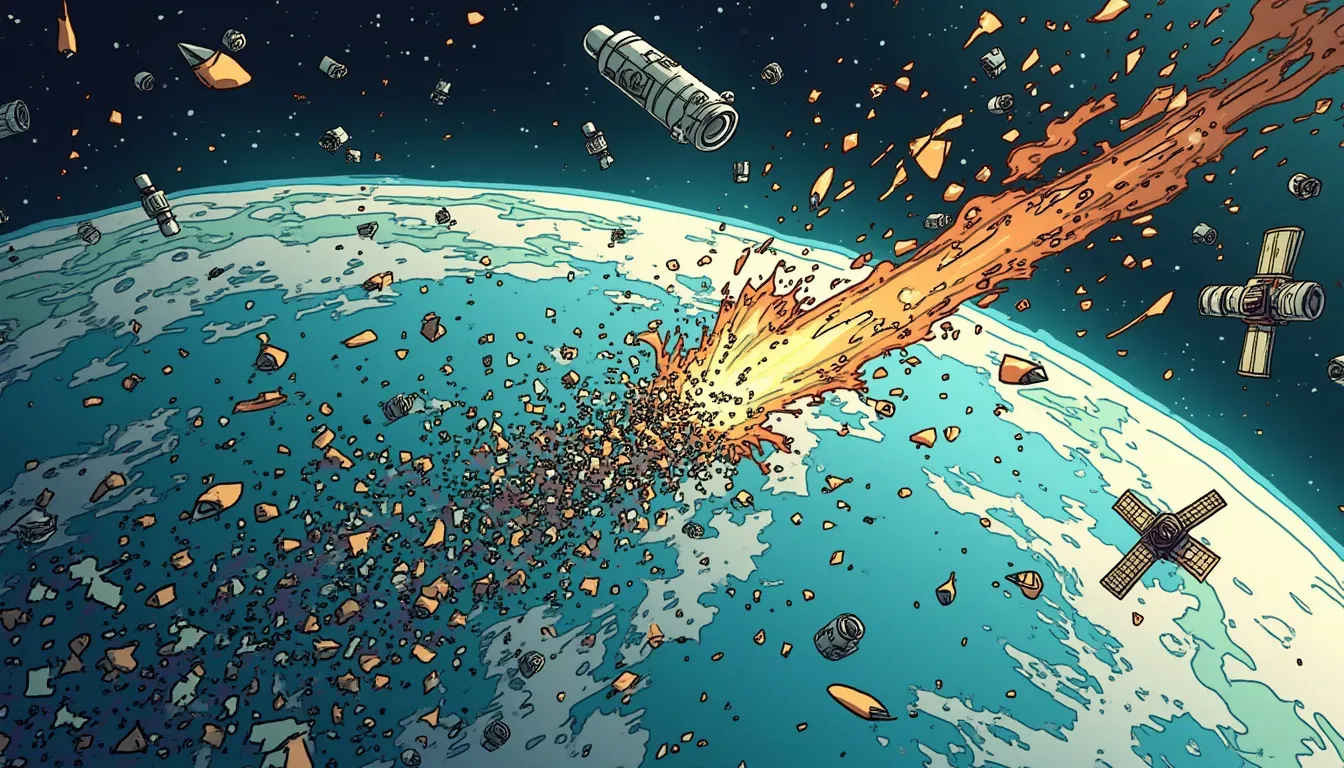Introduction: The Space Junk Dilemma
In just 70 years, humanity has blurred the boundary between aspiration and negligence by creating an invisible debris field around our planet. With over 13,000 tons of space junk orbiting Earth, what's left is a reminder of the high-speed challenge facing our continued exploration and exploitation of space. This article explores the breadth of the issue, potential risks, and promising solutions on the horizon.
"It's a throwaway culture" is what epitomizes our approach to space debris, as discarded satellites, rocket tops, and other fragments swirl above us.
The Scope of Space Debris
Invisible Threats:
The space surrounding Earth is teeming with millions of smaller, often untrackable objects moving at remarkable speeds—far faster than any bullet. These tiny, lethal projectiles include microscopic flecks of paint and metal, capable of puncturing the outer layers of the International Space Station (ISS).
"Even microscopic specks can become lethal projectiles in the near vacuum of space."
Such challenges dictate the need for deflector shields onboard the ISS. Astronauts, often disturbed by the sound of debris hitting the structure, can recount at least 39 cases in which crews retreated into escape pods or engaged in avoidance maneuvers to dodge near-collisions with space trash.
Kessler Syndrome: The Cascading Crisis
The Kessler Syndrome—named after NASA scientist Donald Kessler in the 1970s-encapsulates the bleak scenario in which collisions result in fields of smaller, uncontrollable debris. Each new collision escalates the potential for further impact, threatening more satellites and spacecraft. A notable incident was the 2009 collision between a non-functional Russian craft and an Iridium communications satellite, leaving thousands of fragments in its wake.
The consequences of increased space congestion could ultimately limit our access to space itself.
Monitoring and Prevention
Facilities like the atmospheric and radio astronomy observatory southwest of London now monitor manifold orbital objects. Tracking around 35,000 large targets, many remain inactive, spiraling out of control and threatening critical science and communications networks globally. This fast-growing complexity underpins requests for advanced risk mitigation strategies, essential for staving off looming threats amidst a booming demand for satellite services.
Orbital Traffic Alerts
As orbital traffic swells, collision avoidance advisories have become a near-weekly occurrence. Starlink, owned by SpaceX, managed over 49,000 risk avoidance maneuvers within six months, emphasizing the acute attention spacecraft operators must give to potential collisions. With a constellation numbering nearly 7,000, the continued expansion spells greater concern if sustainable practices do not become standard.
Economic Implications
The rapidly growing satellite services market highlights economic stakes with revenues surpassing $110 billion in 2023 alone. These formidable figures underscore a need for sustainable practices; otherwise, space debris endangers substantial economic assets, loosening foundational ties to satellite utilities such as navigation, communication, and meteorological services.
Solutions and Future Strategies
Zero Debris Initiatives:
In efforts to curb rising debris, many organizations have embraced zero debris policies, cautioning against further contributions to junk levels by implementing satellite de-orbiting maneuvers post-lifetime. However, moving satellites into the sun or out of Earth's gravity field proves futile due to the exorbitant energy requirements.
On-the-ground re-entry plans, while a step toward controlled outcomes, incur their risks. Solid metal alloys within satellite structures can survive re-entry, posing hazards akin to falling space junk landing in unguarded zones and at times, inhabited territories on Earth.
Pioneering Debris Removal
Economic and strategic incentives spur companies to develop debris removal capabilities. Firms such as Astroscale venture into missions designed to retrieve and de-orbit massive junk items before they fragment. Sophisticated maneuvers, requiring spacecraft adept at catching tumbling debris without collision, are in the works; a mission deploying such technology is anticipated by 2026.
Combining practical end-of-life management and ambitious clean-up missions spells promise for confronting the debris journey in space.
Regulatory Considerations and Collaborative Efforts
Given the perceptibly looming chaos from escalating launches, establishing robust policies such as the United Nation's Outer Space Treaty of 1967 becomes crucial. Though its precepts stem from an era preceding rampant space commercialization, it emphasizes state responsibility for national spacecraft in orbit.
While clear definitions and rules exist, execution and enforcement necessitate national commitment, channeling space-age ethics towards effective governance.
Sustaining Tomorrow's Space Exploration
Visionaries behind the engineering marvels navigating our solar neighborhood must rise to this challenge. As demands grow exponentially, balancing ambition with proactive clean-up endeavors is crucial for ensuring sustainable expansion beyond Earth's confines.
"Future industry and exploration may become too risky if we don’t clean up the growing mess."
Conclusion
Space represents boundless potential for scientific discovery, economic advancement, and communication breakthroughs. Yet, if caution is ignored and strategic actions postponed, we risk transforming this cosmic opportunity into a realm of perilously spinning hazards. Consensus-driven initiatives, innovative clean-up methods, and tight-knit policy enforcement are imperative to navigate our cosmic neighborhood.
In pure astronomical wonder and with responsible foresight, humanity stands ready to secure space's enduring value.
SATELLITE, SPACEX, SPACE EXPLORATION, SPACE POLICY, SUSTAINABILITY, ASTROSCALE, KESSLER SYNDROME, OUTER SPACE TREATY, SPACE, YOUTUBE, SPACE DEBRIS

